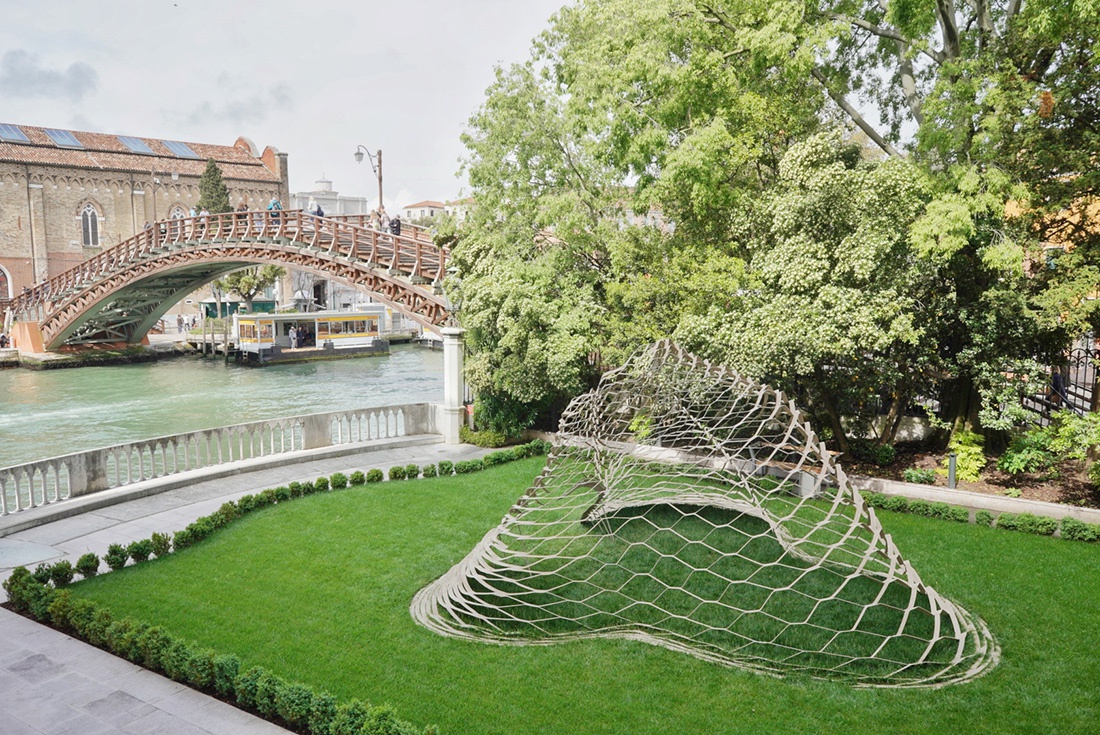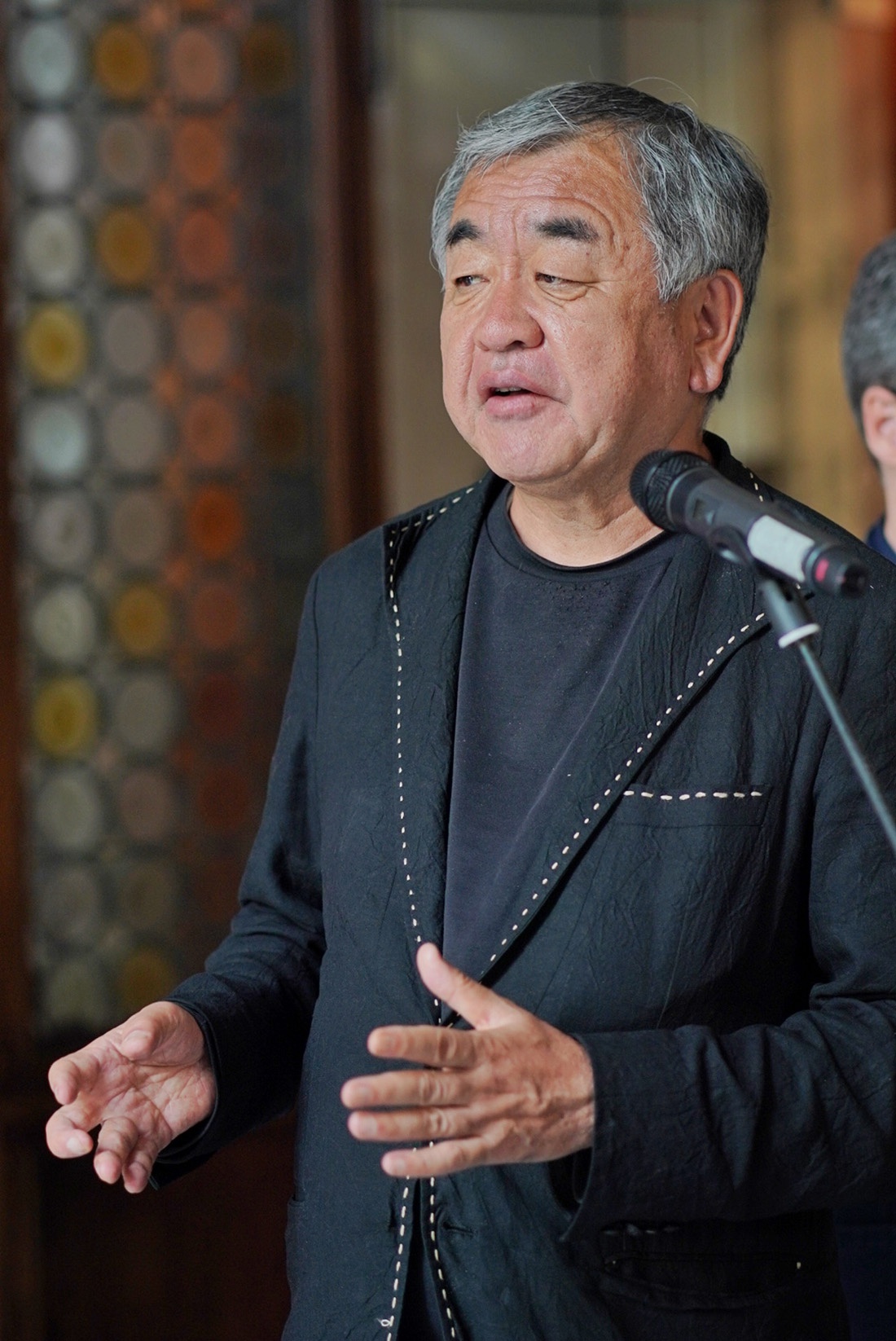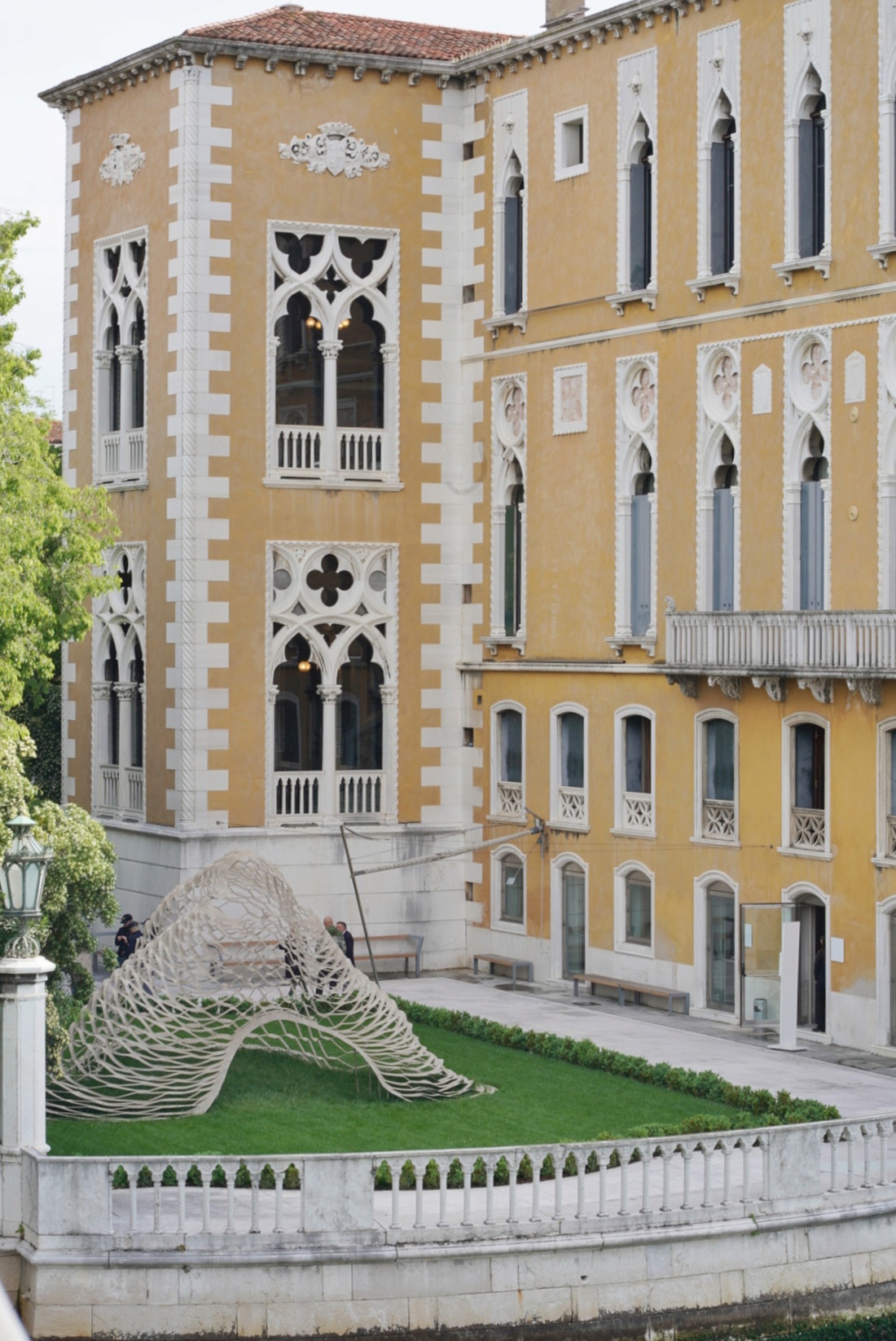

ARCHITECTURE ACCORDING TO KENGO KUMA ON SHOW IN VENICE
"A new language, a new way of using materials". Architect Kengo Kuma uses these words to highlight the strength of his projects, born from the study of the environments for which they are intended as well as from the relationship with the traditions and construction knowledge of local craftsmen. Diverging from the Japanese poetics of the seventies, Kuma has always rejected the use of concrete and rigid geometries to devote himself to experimentation based on lighter materials such as wood, paper and metal: "A new way to give warmth to people", he declares. The idea of Onomatopoeia was born, as the curator of the catalog Marco Imperadori recalls, from the 2017 essay of the same name in which the synthesis of word-sound is exalted as an effective and playful means of translating the founding elements of his design practice. The setting up of the Venetian retrospective is essential and gives the scene to the maquettes, essential and numerous in the design process, accompanied by photos of the completed projects.
ONOMATOPEIA: THE PRIMITIVE LANGUAGE OF ARCHITECTURE
There are thirteen onomatopoeias which, complete with explanatory tables and ideograms, accompany the journey through the most recent projects of the architect and the two sculpture-architectures specially created for the exhibition: The Albero della Barca, a majestic wave in chestnut, homage to the wood that supports Venice, and Laguna, a polymorphic installation that relates the public, earth and sky in the elegant garden on the Grand Canal. Any examples of onomatopoeia? "Para-Para" - Full/Empty, or the dimension where perception is never solid, but a set of particles that make up a shape alternating full and empty. It is evoked in the Yusuhara Wooden Bridge Museum (2011), where small sections of wood 180×300 come together to create a light, airy bridge, whose structural light comes precisely from the interstices. And again, "Zara-Zara" - Raw/Perception, instead refers to the centrality of the physical characteristics of the materials. This is reflected in the Antoni Clavè Archives in Paris (2017), which are set up with an aluminum sheet that has been stretched and treated in a washi paper bath; a sensation of imperfection to rediscover naturalness, warmness, as the architect would say. And like these many others are the sounds that shape Kengo Kuma's intentions.

ARCHITECTURE, MAN AND THE ENVIRONMENT IN THE POETRY OF KENGO KUMA
In conjunction with the 18th Architecture Biennale, Onomatopoeia Architecture is a rare opportunity to appreciate the extraordinary synthesis of the poetics of the Kengo Kuma & Associates studio, which has over 400 interventions, including buildings and installations, on a global scale. A stimulus that leads to rethinking the relationship with architecture, urging a renewed commitment to abandon the canons of the last century in favor of a holistic, empathetic and ecological vision, aimed at entering into synergy with the environment and breaking down the barriers between nature and man.
